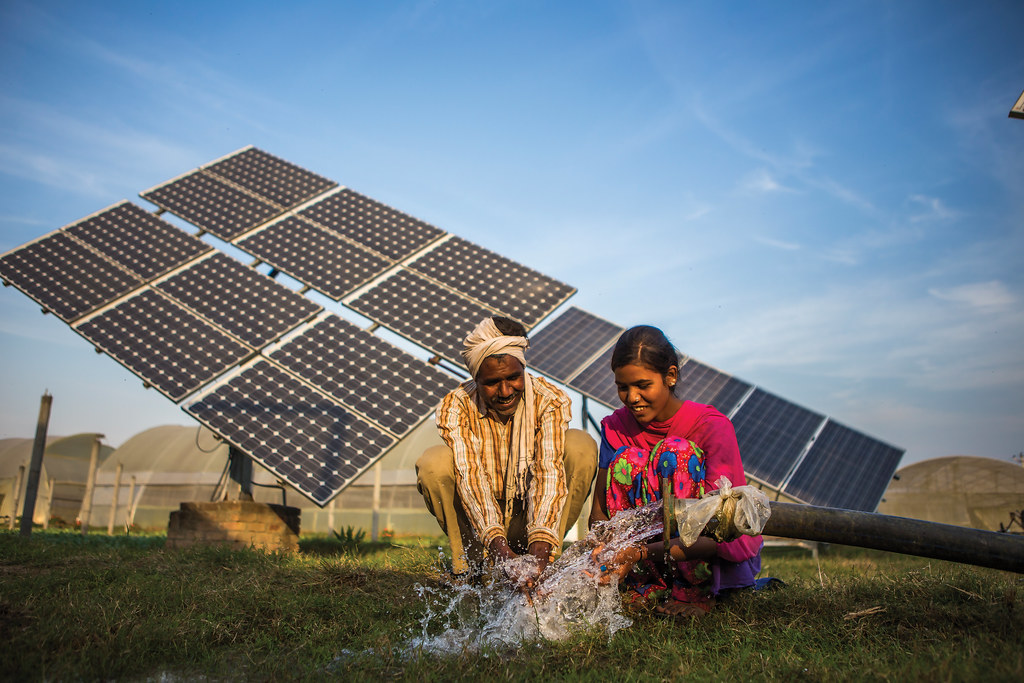Precision Engineering and design of Solar based Water Pumping station is the way ahead for Cost Effective & Sustainable Farming
Agriculture, as one of the primary sources of economic activity and one of the most primitive acts of sustenance has always been dependant on natural acts—even for water supply in the fields.
There used to be hinges and pulleys to bring in the much-needed efficiency and continuity of water flows in the fields. Long back as mechanisation started, diesel pumps offsetting the man-made coarse structures were one of the first changes that happened.
The diesel pump-sets were a good option till the time worry about climate pollution from diesel burning and questions about sustainability started popping up.

However, fields and irrigated lands being out of now-where and disconnected from localities, unavailability of electrical power leaves the rural farmers at the mercy of other sources of water generation to irrigate their farmland and even use human power to carry the water source to the fields in many cases.
To obtain optimum yield on such land efficient, sustainable water supply and management exerts a crucial role in supplemental irrigation of farmland. And one of the most cost effective and sustainable measures is to replace the diesel with solar power.
However, for solar panels to be installed which can harness maximum sunlight and provide maximum power to the pump, it needs integrated expert services along with precision engineering to get the best results.

Certain choices that need to be taken while installing Solar panels aimed at water supply for agriculture includes decisions like:
- Fixed Tilt or Auto-Rotating Tilt– For maximum solar input at latitudes higher than 10 degrees, the fixed ground-mounted array frame usually should be orientated towards the equator, thus offering a choice of tilt-bar. Also, the tilt of the panel should never be less than 10 degrees because that much tilt is needed to allow rainwater runoff fast enough to help clean the modules.
- Water Level: If the water requirement varies throughout the year, the designer will need to select a tilt angle and array size such that the solar water pumping system can provide the water required for all months. It will also be necessary to factor in that the water table itself may vary in summer months.
- What is the size of the pump that needs the power: To get the proper solar system, analysis of pipe sizing and pump sizing is crucial, which is again dependant on the irrigation target. Generally, while selecting pump sizing, total head & water requirement are the factors that are being considered but one fails to pay attention to pressure drop calculations.
Given that the installation locations are remote and does not have access to regular service back-ups, it is important that the precision engineering is well-handled so that possibilities of break-down are addressed.
Only with good engineering and study of the required details will ensure that Solar based Water Pumping station remains the best possible answer for cost effective and sustainable farming practices.
In India, the cost of the water pump is more than the per capita income of the farmer. Hence to optimize the cost as per the requirement and get the right advise and acquire the right system, it is necessary to evaluate the details and have professional help before incurring substantially large overhead cost.


I like the efforts you have put in this, thanks for all the great articles.